That’s My Password
Most people use the same password for many sites or have them written down some place. Both practices are frowned on by security professionals. To solve this there are many programs and sites that offer a “key chain program” to safely save your keys/codes/passwords for you. Last issue I talked about the advantages of password keepers. One advantage, I didn’t mention, is that if you have the same password at many sites and one of them is compromised you don’t have to change the password at all of your sites with that password. That was the impetus for me starting to used a password keeper. I mentioned that I use KEEPASSX because of it’s versatility. I can now also recommend it for it’s usability. Here at affinity Comptuer Masters we have our own User Usability Tester. My wife, Susan, will be the first to tell you that she is not a technophile. But I did get her to use keypassx with some arm twisting. Susan, then began to like the program and suggest I blog about it. And just this week she added her own new password to her KEEPASX program to a new card-making site she joined. She was so proud she joyously showed it off to me. The thing is, she did it right with out any guidance from me and so can you. To get the program put http://www.keepassx.org/downloads/ in the address bar of your web browser. The address bar is above the page to the left of the search bar. Don’t put it in the search bar to the right or that is at the top of the page. You’ll want to click on the ZIP bundle that is under the Windows heading. Then go to the folder where you get your downloads an right click on keepassx…win32.zip and select extract here. Click on the KEYPASSX folder this generates. Finally right click on the KEEPASSX executable and drag it to your desktop. Click on create shortcut in the dialog that appears. Now, when ever you want to use it double click the icon you just created. Enter your master password (use a full sentence with spaces and punctuation) twice. This is a sentence you should remember. KEEPASSX can’t remind you of it. Now you’re ready to start. Click on the key with a green down arrow to add new passwords. And fill in the information. After you add a password don’t forget to click the floppy disk icon to save it. Once some passwords are entered just double click on the URL (the web address you entered) and your web browser will open to that page. Then double click the username (show as asterisks now) then in the browser click in the user name field, hold down the ctrl button on the keyboard and hit the letter “v”. Do the same for the password. You are now logged into your web site. At first blush this seems a lot of work, however, it does save you a lot of typing and as you get used to it it becomes second nature. The file that you created when you added the passwords and saved them can now be put on a thumb drive with the program and brought with you where ever you go. It can also be place on your other computers (including the computer that is called a phone or tablet). I do this to have personal information available to me where ever I go. You can use the comments section to store more than passwords and they are scrambled too when you save...
read moreWhat’s That Password?
Most people use the same password for many sites or have them written down some place. Both practices are frowned on by security professionals. To solve this, there are many programs and sites that offer key chain programs to safely save your passwords (keys) for you. Save Keys On-line or in the PC (on-device) The on-line versions let you get your passwords anyplace there is Internet access and can be on any web enabled device. The on-device versions are not kept with a third party nor sent over the Internet. However, changes to the passwords have to be synchronized on the various devices that you use. Though, on the face of it, on-line password keepers seem to have the upper edge. Their security model reduces their effectiveness to that of having all the passwords being the same in the case of the password site being hacked. So, I prefer the on-device key keeping software. There are difficulties with this too which make this system just better than writing down the passwords on paper. The improvement is that they are saved in a cryptic form and can’t just be read by anyone in passing (unless you leave it running on your computer screen). Why Go Through the Trouble? Once you start using a password saving program it can save you a lot of time. I personally have 177 passworded sites I visit. By using my password program I can be sure I am going to the correct site and not a look-alike site that a scamer has put up hoping for a typo to get people to his scam. Then, when I’m on the site I often have trouble with what login I used; some use an email address but still call it a login. Then I would only use a few passwords one for sites dealing with money another for information sites, etc. Even with this limiting I would get confused and often have to spend the time to go through the password recovery process. The password saving program prevents this time consuming guessing game and resetting of the passwords. It is especially useful when a site requires me to change my password every 90 days and it can’t be the same as any of the last 10 passwords. Which To Use? The password program I use is KEEPASSX. It encrypts your data in two ways and I can use it on many devices. I use it on Windows, Mac, Linux, and my Android smart phone. If you would like to set this program up on your devices, please give Affinity Computer Masters at 350-6984. More information is available in the next...
read moreWe Are Microsoft, Trust Us
Lately, here in Oklahoma there has been a rash of social engineering attacks on computers. Social engineering is just a fancy way of saying SCAM. People will call you saying they are from Microsoft, Apple, a virus protection company (Norton, McAfee…) or your Internet provider, and say that your computer has been detected as causing problems and it needs to be checked or fixed. How the Scam Works As mentioned above, someone calls using a name that is “reputable”. You trust that name and thus trust them. They hope you don’t question how you can be sure they are from who they purport to be. These are scam artists that are very well versed in convincing you to do what you know not to do. They are no different than the fake roofers who come to town and go door to door after a tornado or hail storm trying to sell you a roof you don’t need or will never show up, even after they’ve gotten a deposit from you. Besides gaining your trust, they then add scare tactics to confuse you. They’ll tell you that you have a large number of viruses or that you could be in violation of the law or of the peril your bank account is in. Remember, these scamers are professional. They will convince you that the people with whom you have been getting your computer work done have not done their job and they(the scammers) will fix it. If you do have problems with your computer and your Internet provider is going to stop your Internet they will contact you by paper mail. This often happens if your computer already has been compromised and a rogue program is sending information from your computer to outsiders. Once the scamers get on your PC they quickly plant a back door on your computer. A back door is a program that will let them use your computer any time without your permission. Often, people soon regret their decision to open up their PC to these people and shutdown the PC or the Internet. However, by the time the PC is off the Internet, the back door is in the computer and the damage is done. If you don’t terminate the call and Internet connection right away then they try to get more from you. They’ll try getting money from you for fake service, get your credit card info, drivers license number, etc… They will try to get anything that they can use or sell in the criminal underground. What Is the Damage? Besides getting money and your identity, they can now use your computer to store stolen goods, use to serve web pages that trap other Internet users for them and their tools for breaking into yet more computers. You may not notice any changes to your computer. The more accomplished criminals will try to keep your computer running so you don’t get it fixed. Often though the computer will be slower. Other symptoms may or may not appear, such as the Internet Security you have may not update or parts of it will become disabled. The Internet connection may seem not to work or be intermittent. When you go to a page on the Internet another page will be displayed. For those who read this blog regularly I’m sorry for the repeat of the topic. However we are getting more of these calls. So it bears repeating DON’T GIVE UP CONTROL OF YOUR PC to anyone you don’t know. If you get such a call just hang up. If not delay them. Turning off...
read moreBack to Backup
May 05, 2014 An affinity for News Kurt R. Rahlfs Back to Backup Many of you have heard me harp on the importance of your data and backups. I became a big fan of correct backup procedures when, in graduate school, I lost a term project a week before the end of the term. This was because the company I was working for backed up its data by writing over last week’s backup. I destroyed my work just before the backup took place so my empty set of data wrote over the mostly complete set of data from the previous week. This is more oriented towards businesses from small to large but the basics apply to the home user and the hobbyist who records income in quicken or QuickBooks. Data Protection The most common failure of a computer is the hard disk. It is a mechanical device so it can just stop from the time you take it out of the box to years after. When it goes and gets replaced you are left with even less than you had when you got it from the manufacturer. Though not really a backup, the first line of protecting your data is to use one of the approaches to “mirror” your data on more than one disk. This way if one disk fails, you are still up and running on the other disk. You can then replace the failed disk with minimal down time. Otherwise you may have days of recovering your data and reloading all the programs that had been loaded since the computer left the assembly line. Basic Backup Though you may seem to be protected by the disk mirroring, it doesn’t protect from things that you may do unintentionally (like me for my term project) or that hackers, thieves or nature can do. Computers have come to me with anything from sewers backing up to fires and tornadoes. This protection needs a backup. The first backup I now recommend is a cloud backup. The main advantage of this is that the backup is not near the computer. Backups with tapes or disks that are attached to the computer only protect you from the mistakes you make. The more common problems are not protected by local backups. Help The national business stores that work on home PC’s, like Best Buy and Apple, don’t have a staff of industry certified technicians. At affinity all our technicians have A+ certifications to work on any of your computers and Net+ certifications to work on your networks and Internet. A Security+ is also available to protect your computers. To always get an industry certified technician call affinity Computer Masters at...
read moreLicensure and software replacement
With today’s global exchange of data and information, issues of licensing and copyright are all the more confusing. When it comes to the programs and applications you use in your personal and business computing, it is important to understand what those laws mean for you. What can be replaced Many times the question of license never comes up until a hard drive has crashed, the operating system has been rebooted and the computer user discovers that their favorite programs are missing, or unable to be used. This is a good news/bad news scenario. The good news is, if you have your license key, and a copy of the software, or download password, those programs are likely able to be restored. The bad news is that most users don’t know they need those things, and will have to repurchase the software in order to get it back. What you will have to buy If you did not record your license key number, keep the packaging it came with, or write down serial numbers for downloaded software, you will probably need to buy new software. Unfortunately, without these items there is no way for the software maker to ensure that you did in fact purchase a legal copy, and to protect themselves they will require you to repurchase. How to find your code keys (code of authenticity) 25 characters So, how do you get this vital information? Simple. With packaged software, you will look for a “code key” or “code of authenticity” also known as the COA, on the package, in the manual, or on the jewel case of the disk. This code is typically 25 characters and will be labeled. Keep your packaging handy, but also write, or print these into a file that can be kept safe with the title of the software and a list of when and where it was installed. For downloaded software, the COA is not as common. Many of the companies that sell download software generate their own serial number or code key. These can vary from 4 characters, up to the 25 character code. Write or print these out as well, and don’t just save them in your computer. Another option is to save them in a “cloud” document on a service such as Google Docs, or Drop Box. Downloaded software typically has email password, save...
read moreData Recovery
> >Symptoms of hard drive failure Symptoms of hard drive failure, or imminent failure can take on many forms. The computer may stall unexpectedly, files and programs may appear garbled, the screen may flash black, or blue, and in some cases, beeps are heard, indicating a problem. In many instances, the system will warn you. Whenever any of these things occur, if you do not have a current backup of your system, and it will start normally, make one immediately, or bring it in so we can backup your data. If the problem is not a hard drive, but rather some form of malware, other hardware problem, or virus, we can detect this quickly and make the necessary repairs to avoid data loss. In the case of a hard drive that has failed and will not start normally, there are two possible scenarios. Best Case: your data, or at least a portion can be retrieved using normal measures so that it can be restored onto a new hard drive. This is typically a job for the pros, and we can handle it for you in our lab. Any recoverable data will be backed up on to one of our secure servers, then burned to disk, or transferred to a new hard drive for you. Worst Case: If the hard drive is not merely corrupted, but is physically damaged, no data at all may be able to be recovered. In these cases a simple test will tell us and we can offer the services of a data recovery lab where the disk will be taken apart and mined for existing files that can be retrieved. This is very expensive, and results are iffy, but in the case of important information, or priceless media, it is available. Whatever the case, Affinity stands ready to see you through it. We will recover as much of your data as possible, as quickly and at the lowest cost we can. We will also help you to replace your hard drive, bring your system back online and walk with you through restoring your files, if they are...
read more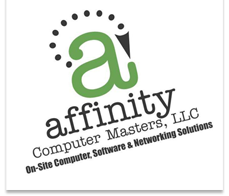
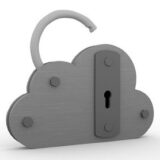
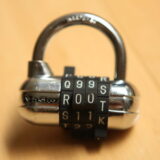
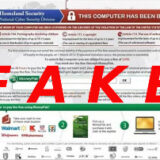




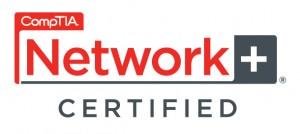
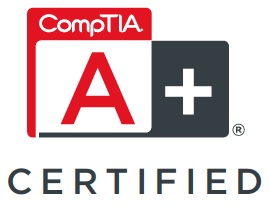
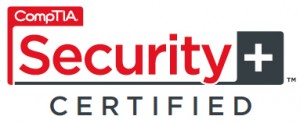
Follow Us!